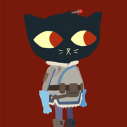Candidate for final file format (expanded)
Y direction and Angle Direction
24 members have voted
-
1. Y direction and Angle Direction
-
'y' increases as you move downward, 'angle' represented in clockwise degrees12
-
'y' increases as you move downward, 'angle' represented in counterclockwise degrees2
-
'y' increases as you move upward, 'angle' represented in clockwise degrees0
-
'y' increases as you move upward, 'angle' represented in counterclockwise degrees10
-
-
Recently Browsing 0 members
- No registered users viewing this page.

Recommended Posts
Join the conversation
You can post now and register later. If you have an account, sign in now to post with your account.
Note: Your post will require moderator approval before it will be visible.